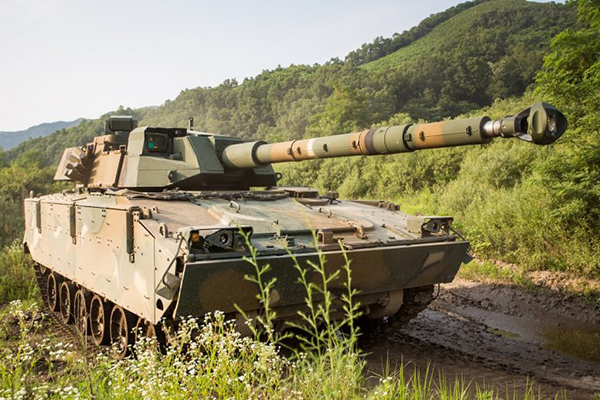With the Indian Army on a major drive to equip itself adequately on the Sino-Indian border, the Defence Research & Development Organisation (DRDO) and Larsen & Toubro (L&T) have joined hands to develop an indigenous light tank that is optimised for the extreme cold and high altitude of Ladakh and Arunachal Pradesh.
Having co-designed an indigenous, 25-tonne, light tank, the DRDO has placed a development order on L&T to build the first prototype, say Army sources.
Meanwhile, the Defence Acquisition Council (DAC) — the Ministry of Defence’s (MoD’s) apex body for capital purchases — has granted an Acceptance of Necessity (AoN), or in-principle agreement, for seven light tank regiments, each equipped with 45 tanks.
The AoN requires L&T — the MoD’s development partner — to build one regiment of light tanks, while the MoD acquires the other six regiments under the “Make” procedure.
The light tank will have a hull, co-developed by DRDO and L&T, that will house an 800 horsepower (HP) engine optimised for high altitudes. The engine will be provided by German firm MTU, which is a subsidiary of Rolls-Royce.
Mounted on this hull will be a 105-millimetre gun turret, procured ready-built from Belgian firm, John Cockerill.
It is intended to marry the DRDO’s expertise in tank design, created while developing the Arjun tank, with the heavy engineering capability of L&T, which is already building the K-9 Vajra self-propelled artillery gun system for the army.
The indigenous light tank was initially planned to be built on the chassis of the K-9 Vajra. This, however, was ruled out because the Army placed a weight limit of 25 tonnes on the light tank, while the Vajra’s heavy chassis would take its weight to at least 34-35 tonnes.
The armoured challenge from the People’s Liberation Army (PLA) in Ladakh is centred on China’s new light tank, the agile and versatile ZTQ 105 — also known as the Type 15 –developed by China’s North Industries Group Corporation (NORINCO) and unveiled during the Zhuhai Air Show in 2016.
The ZTQ 105 has a 105-mm rifled gun that can destroy enemy tanks at ranges of two-to-three kilometres (km). It also fires anti-tank guided missiles to knock out tanks at ranges of five km.
The Indian Army currently uses Russian T-72 and T-90 tanks on the Sino-Indian border. But these hefty, 42-45-tonne main battle tanks are designed for the plains. Movement is difficult for them on steep and narrow mountain roads.
There are also limitations on how much their heavy 120-mm guns can be depressed or elevated, sometimes preventing them from engaging targets on hilltops or in valleys. That is why the Army took only small numbers of T-72 and T-90 tanks into Ladakh to counter the Chinese intrusions in 2020, and used them only sparingly.
In contrast, the Army has a formidable combat tradition of using light tanks in the mountains. In 1944, it used Stuart and Sherman tanks in the battle of Kohima. In 1948, these same tanks pushed back Pakistan forces in the Zoji-la pass. Against China in 1962, the Army used light AMX-13 tanks in the battle of Gurung Hill near Pangong Tso and deployed them in Bomdila and Dirang in Arunachal Pradesh. In the 1971 Bangladesh campaign, French AMX-13 and Soviet PT-76 tanks played a stellar role in the battle of Garibpur.
Although the K-9 Vajra artillery gun is designed for use in plains terrain, the Sino-Indian border tensions in 2020 saw a full regiment of these long-range, self-propelled guns deployed in eastern Ladakh, to increase the army’s long-range firepower.
Their successful deployment prompted the Army to consider diverting significant numbers of K-9 Vajras for use in mountainous terrain. This requires L&T to build 100 more K-9 Vajras; as well as induction of the Ordnance Factory Board’s indigenous 155 mm, 45 calibre Dhanush howitzers, and imported M777 ultralight guns.
To cater for this enhanced firepower, L&T has built 100 K-9 Vajras in Hazira, near Surat, with technology transferred from South Korean defence major Hanwha Defense. It handed over the 100th SP howitzer on February 18, 2021, ahead of its contracted date.
Now the MoD is pursuing the “Vajra repeat programme”, which requires L&T to build another 100 K-9 Vajra howitzers. L&T’s proposal is currently before the MoD’s “technical evaluation committee.” The commercial bid is likely to be opened this month.

















